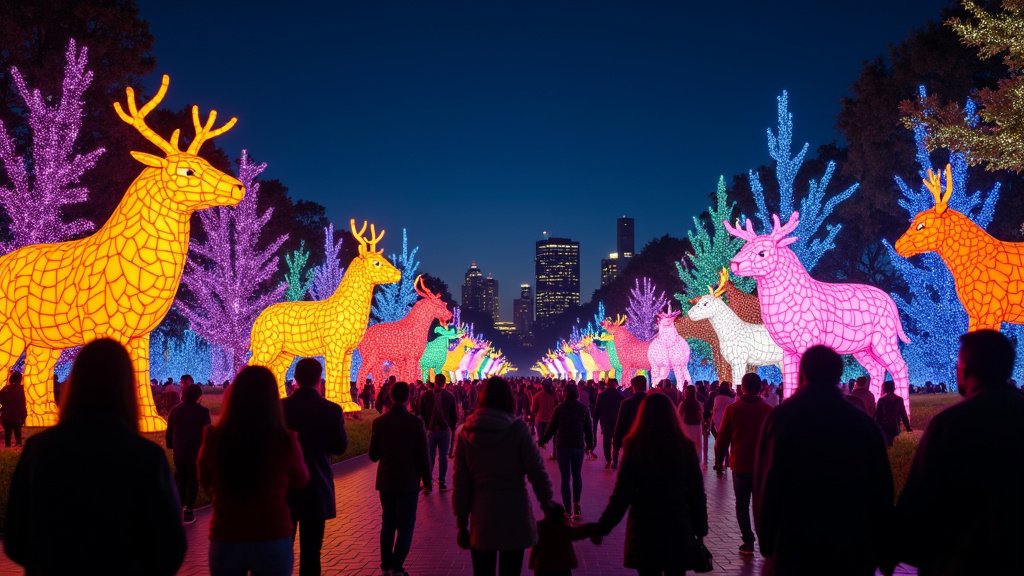Your Ultimate Guide to Navigating the Los Angeles Metro System
Los Angeles is a sprawling city known for its traffic and car culture, but many residents and visitors might not realize that an extensive public transportation system operates just below the surface. The Los Angeles Metro system, which includes subway lines, light rail, and buses, offers a viable alternative for getting around without the hassle of driving. This guide will provide you with everything you need to know about riding the Metro, from obtaining a TAP card to understanding the various subway lines and bus services.
Understanding the Los Angeles Metro System
The Los Angeles Metro system is often misunderstood, with many people quick to criticize its limitations. However, the reality is that it provides a robust network for navigating large portions of the city. While it might not be perfect—light rail can be slow, some bus routes share traffic with cars, and numerous residents live miles from the nearest station—there’s potential for pride in the system’s artful subway stations and the efficiency of light rail lines during off-peak hours. As you embark on your car-free adventure, you’ll discover that the Metro system can indeed be your gateway to exploring Los Angeles.
Getting Started: TAP Cards and Fare Structure
To ride the Metro, you’ll first need to acquire a TAP card, either physical or digital. While the digital option is available via the TAP L.A. app for iOS and Android, we recommend starting with the physical card for ease of use. The physical TAP card is available at all Metro Rail stations and select retailers, with a nominal $2 surcharge. These reusable cards can be loaded with pre-set dollar amounts, making them convenient for regular commuters and visitors alike.
As of July 1, 2023, the fare structure has shifted to a fare-capping model that eliminates traditional daily, weekly, and monthly passes. Instead, riders will find a maximum that they can be charged: just $5 for a day or $18 for a week of travel. A single ride, regardless of distance, costs $1.75 and includes free transfers for up to two hours. While TAP vending machines are scarce at bus stops, you can purchase a TAP card on board buses, which also accept exact change.
Holding onto your TAP card is essential, as it is valid across all 26 county transit agencies and has a lifespan of ten years. For those who prefer the convenience of ordering or refilling their cards online, the TAP website offers a seamless process.
Riding the Metro: Tips and Tricks
When entering a train station or boarding a bus, simply hold your TAP card against the marked terminals. Some light rail stations do not feature turnstiles, but it’s crucial to tap your card nonetheless; failing to do so could result in a hefty fine of up to $250. Metro operates most lines from before 5 a.m. until after midnight, with trains running as frequently as every ten minutes during peak hours. Off-peak times may see waits of up to 20 minutes, but the Metro’s Nextrip service can help alleviate some uncertainty regarding arrival times.
Metro Lines: A Closer Look
Los Angeles Metro boasts two primary subway lines, both of which share many of their stops. While the original lines were designated by colors, they have since been rebranded with letters for clarity and ease of navigation.
B Line (Red)
The B Line, Metro’s original subway line, begins at Union Station and travels near notable Downtown landmarks such as Grand Park, the Music Center, and Grand Central Market. As it continues into Hollywood, it stops at attractions like the Pantages Theatre and the Walk of Fame, ultimately reaching Universal Studios and the NoHo Arts District in North Hollywood. This line provides a vital connection between cultural hotspots and entertainment districts.
D Line (Purple)
The D Line, a shorter subway line, shares tracks with the B Line until Wilshire/Vermont, where it forks off to end in Koreatown. Exciting expansions are on the horizon, with plans to extend service westward to LACMA by 2025, Beverly Hills by 2026, and UCLA by 2027. The recent Regional Connector project has improved connectivity between these two subway lines, making transfers at the 7th St/Metro Center station much more efficient.
Light Rail Lines: A Scenic Ride
Light rail lines, primarily above ground, offer stunning views as they traverse various neighborhoods. The new Regional Connector has revolutionized these routes by creating three new stations within a compact 1.9-mile stretch of tunnels in Downtown L.A., transforming several shorter routes into longer, more streamlined options.
A Line (Blue/Gold)
The A Line, which loops around Long Beach and heads north through South L.A., has become an essential part of the Metro’s network. Thanks to the Regional Connector, it now extends seamlessly into Union Station, continuing through Chinatown, Highland Park, and Pasadena, with plans for further expansion into the San Gabriel Valley.
C Line (Green)
The C Line runs parallel to the 105 Freeway, connecting Norwalk to the South Bay region, including a stop near LAX. Travelers heading to the airport will need to transfer to a shuttle bus, but this line remains a vital artery for those in the area.
E Line (Expo/Gold)
One of Metro’s newer light rail lines, the E Line, takes you from downtown Santa Monica to various destinations, including USC and Exposition Park. Despite its slower pace through downtown due to minimal signal priority, it serves as a reliable alternative to driving.
K Line (Crenshaw)
The K Line is the newest addition to the Metro system, currently running from the E Line’s Expo/Crenshaw stop through Inglewood. Future plans include a direct connection to LAX, with an expected opening in 2024. Until then, a bus service operates at the southern end of the line. Once fully operational, the K Line will significantly enhance access to the airport for travelers.
Metro Buses: The Backbone of Public Transit
In addition to rail service, Metro operates an extensive bus network that serves as the backbone of public transit in Los Angeles. The Metro Liner routes provide longer buses with dedicated lanes, allowing for faster travel on freeways and surface streets. While the frequency may not match that of rail service, buses are an essential component of the Metro system, connecting riders to neighborhoods not directly served by train lines.
Conclusion
While Los Angeles may be synonymous with car culture, the Metro offers an effective and enriching alternative for navigating the city. From acquiring your TAP card to understanding the various subway and bus lines, this guide equips you with the necessary tools to embark on your car-free adventure in L.A. As you explore the intricate network of the Metro system, you’ll not only save time and money but also experience the city in a unique and insightful way. So, embrace the journey—your next adventure awaits beneath the surface of Los Angeles.





